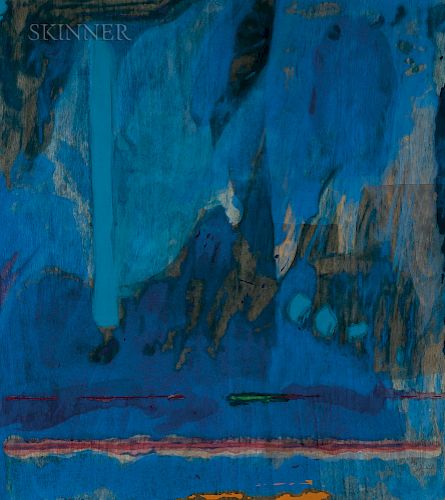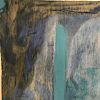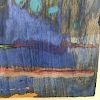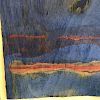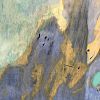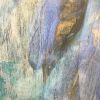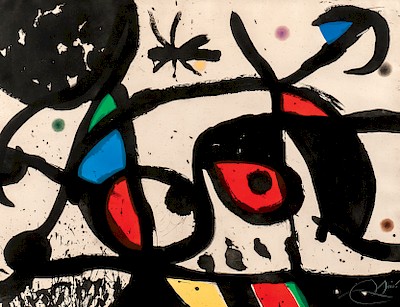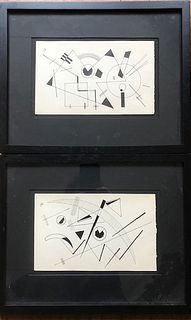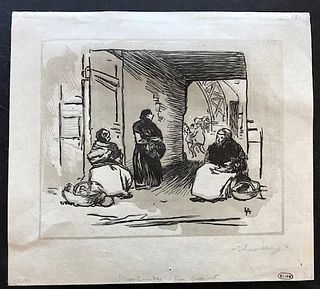Helen Frankenthaler (American, 1928-2011) Tales of Genji III
Lot 76A
About Seller
Bonhams Skinner
274 Cedar Hill Street
Marlborough, MA 01752
United States
Founded over four decades ago, Bonhams Skinner offers more than 60 auctions annually. Bonhams Skinner auctions reach an international audience and showcase the unique, rare, and beautiful in dozens of categories, including the fine and decorative arts, jewelry, modern design, musical instruments, sc...Read more
Categories
Estimate:
$50,000 - $75,000
Absentee vs Live bid
Two ways to bid:
- Leave a max absentee bid and the platform will bid on your behalf up to your maximum bid during the live auction.
- Bid live during the auction and your bids will be submitted real-time to the auctioneer.
Bid Increments
| Price | Bid Increment |
|---|---|
| $0 | $10 |
| $100 | $25 |
| $500 | $50 |
| $1,000 | $100 |
| $3,000 | $250 |
| $5,000 | $500 |
| $10,000 | $1,000 |
| $30,000 | $2,500 |
| $50,000 | $5,000 |
| $100,000 | $10,000 |
| $300,000 | $25,000 |
| $500,000 | $50,000 |
| $1,000,000 | $100,000 |
About Auction
By Bonhams Skinner
Sep 26, 2019
Set Reminder
2019-09-26 18:00:00
2019-09-26 18:00:00
America/New_York
Bidsquare
Bidsquare : American & European Works of Art: Fine Prints, Multiples & Photographs
https://www.bidsquare.com/auctions/skinner/american-european-works-of-art-fine-prints-multiples-photographs-4439
63 Park Plaza, Boston | Preview Times: September 25, 12PM – 5PM & September 26, 12PM – 8PM Bonhams Skinner bidsquare@bonhamsskinner.com
63 Park Plaza, Boston | Preview Times: September 25, 12PM – 5PM & September 26, 12PM – 8PM Bonhams Skinner bidsquare@bonhamsskinner.com
- Lot Description
Helen Frankenthaler (American, 1928-2011)
Tales of Genji III, 1998, total edition of 60, published and printed by Tyler Graphics Ltd., Mount Kisco, New York. Numbered and signed "35/36 Frankenthaler" in pencil l.r., printer/publisher's dry stamp l.r. Color woodcut with pochoir on gray TGL handmade paper, sheet/image size 47 x 41 1/2 in. (119.4 x 106.7 cm), framed.
Condition: Deckled edges, subtle cockling, floated within the frame, not examined out of frame.
N.B. Helen Frankenthaler was part of the second generation of Abstract Expressionists, and a leader in the Color Field movement. She was also a voracious student and observer of art, always interested in new perspectives and inspirations. Frankenthaler realized that ".to grow as an artist and to develop aesthetically it was crucial that she continually challenge herself and work outside of her comfort zone. Painting was Frankenthaler's primary artistic passion, but an obsession to push her creative limits led her to turn her attention to print media."1 She began with lithography in 1961. The process of drawing with crayon on stone was not a huge leap for her gestural mark making, although other technical issues allowed her to experiment and grow. The shift to the making of woodcuts, beginning with Essence Mulberry of 1977, however, challenged her more. The process of carving and cutting blocks of wood is slow and controlled, making spontaneity and gesture much more difficult. This is to say nothing of the laborious challenge of inking and printing the blocks. From the beginning, her process for making woodcuts was a collaboration, especially with master printer Kenneth Tyler and his workshop.
Jaklyn Babington's essay for the exhibition Against the Grain: The Woodcuts of Helen Frankenthaler describes the process of creation and collaboration for the Tales of Genji, series of 1995: "It was apparent from the beginning that what was needed was a new approach and technique for making what Helen strove for: a woodcut with painterly resonance. With this in mind, Tyler suggested to Frankenthaler that she could communicate to the workshop of printers and more importantly, remain true to her unique style by painting her ideas for the printed works onto pieces of wood. Supplied with wood, paint and brushes, Frankenthaler worked alone in the artist's studio at Tyler Graphics painting the maquettes for the Tales of Genji. From the painted studies, tracings were made and woodblocks were carved by the ukiyo-e trained Japanese carver, Yasuyuki Shibata. The watery nature of Frankenthaler's paintings created an immediate problem for printing. In order to create the lush transparent washes of colour, the printers had to work quickly with wet sheets of paper that, under the pressure of the printing press, would force the inks to bleed and blend into one another. Through trial and error and laborious proofing sessions, the workshop gradually overcame these technical difficulties. With the Tales of Genji series Frankenthaler had placed not only herself but the entire workshop outside of their comfort zone. Tyler recalls that, 'None of us knew what we were doing . and half the time we didn't know what we were saying. The technique had absolutely no history. We were making it up as we went along.' Despite this leap into the creative unknown, the six resulting images are truly seductive prints. It is with awe that one looks at the woodcuts and realises that the entire project took the artist and the workshop a mammoth three years to complete. "2
1 https://nga.gov.au/exhibition/frankenthaler/default.cfm?MnuID=4
2 Ibid
Estimate $50,000-75,000
Items may have wear and tear, imperfections, or the effects of aging. Any condition statement given, as a courtesy to a client, is only an opinion and should n - Shipping Info
-
Please visit http://www.skinnerinc.com/services/payment-and-shipping/ for information regarding the collection of items purchased at auction.
-
- Buyer's Premium



 EUR
EUR CAD
CAD AUD
AUD GBP
GBP MXN
MXN HKD
HKD CNY
CNY MYR
MYR SEK
SEK SGD
SGD CHF
CHF THB
THB